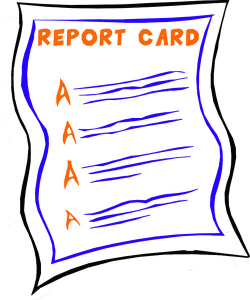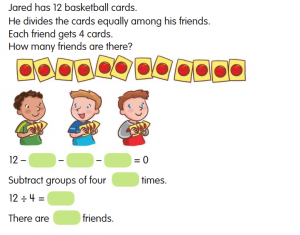Posted by kavery508 | Posted in Uncategorized | Posted on December 14, 2015
![images[5]](https://mraverysclass.edublogs.org/files/2013/12/images5-2fut9c3-300x106.jpg) We’re well on our way to earning enough points for our winter celebration on the 23rd! Thank you for your help checking in with your child regarding homework, and even driving it in when it was needed. Your commitment sends the message of the importance of homework and goes a long way to instilling the right kind of work ethic in your child. As a reminder, you can download a blank reading log from the links above if your child misplaces it.
We’re well on our way to earning enough points for our winter celebration on the 23rd! Thank you for your help checking in with your child regarding homework, and even driving it in when it was needed. Your commitment sends the message of the importance of homework and goes a long way to instilling the right kind of work ethic in your child. As a reminder, you can download a blank reading log from the links above if your child misplaces it.
Speaking of celebrating, this Friday the whole school will gather for our annual Holiday Sing-a-long. We’ll be singing and playing together with songs taught during music education. It’s always a heart-warming way to promote our school value of working together.
 Our classroom is in need of several tubs of antibacterial wipes (e.g. Clorox; Lysol; germ killers–not baby wipes). Please send one in when you can, and thanks! I’m hunkering down for germ fighting this winter in our classroom.
Our classroom is in need of several tubs of antibacterial wipes (e.g. Clorox; Lysol; germ killers–not baby wipes). Please send one in when you can, and thanks! I’m hunkering down for germ fighting this winter in our classroom.
 Report cards will be coming home next week. A few notes about grading: Gone are the days of letter grades, and the system in place now works a little differently. A “3” is Achieving the standard, and that is similar to an “A” grade. A “2” means students are making continuous progress and can do it some of the time, or with help. A “4” is rare: it means students are working a grade level above grade 2 benchmarks. A “1” is even rarer: should any student have been heading there, we would have communicated it well before now (and no one is)!
Report cards will be coming home next week. A few notes about grading: Gone are the days of letter grades, and the system in place now works a little differently. A “3” is Achieving the standard, and that is similar to an “A” grade. A “2” means students are making continuous progress and can do it some of the time, or with help. A “4” is rare: it means students are working a grade level above grade 2 benchmarks. A “1” is even rarer: should any student have been heading there, we would have communicated it well before now (and no one is)!
To be achieving on this term’s report card, students should be reading on level 20 and reading fluently while comprehending text on whatever level they may be at. In writing they should be able to write complete sentences; to show evidence of writing opinion and informative pieces; to tell a story about one event from their lives with a beginning, middle, and end in a clear manner; and to write with spaces, correct upper/lowercase letters, correct punctuation, and mostly correct spelling (including spelling words from quizzes). In math, they should have passed math facts level 7; they should be able to make sense of and solve problems in daily work and on tests; and they should be able to accurately add and subtract 3-digit numbers with regrouping.
 Our CAFE focus this week is on Inferring, which is a strategy we use all the time to help us understand what we’re reading. When we infer, we use our schema (what we already know about something) and combine it with clues from the text to understand something new. Consider these lines from Eloise Greenfield’s poem Things: Went to the beach/Played on the shore/Built me a sandhouse/Ain’t got it no more. My schema tells me that at the beach we build sandcastles, which is what she likely means, and sometimes the ocean comes and washes them away–that’s why the speaker “Ain’t got it no more.” Kids and grownups infer all the time in real life, for example: Snow is in the forecast. When the phone rings at 5:30 AM we can infer school will be delayed or cancelled! It’s smart to catch it when it happens and ask “How did you infer that? What were your clues?” Here is a site that, while designed for teachers, has lots of great info and links on inference: http://www.minds-in-bloom.com/2012/02/tips-for-teaching-inference.html
Our CAFE focus this week is on Inferring, which is a strategy we use all the time to help us understand what we’re reading. When we infer, we use our schema (what we already know about something) and combine it with clues from the text to understand something new. Consider these lines from Eloise Greenfield’s poem Things: Went to the beach/Played on the shore/Built me a sandhouse/Ain’t got it no more. My schema tells me that at the beach we build sandcastles, which is what she likely means, and sometimes the ocean comes and washes them away–that’s why the speaker “Ain’t got it no more.” Kids and grownups infer all the time in real life, for example: Snow is in the forecast. When the phone rings at 5:30 AM we can infer school will be delayed or cancelled! It’s smart to catch it when it happens and ask “How did you infer that? What were your clues?” Here is a site that, while designed for teachers, has lots of great info and links on inference: http://www.minds-in-bloom.com/2012/02/tips-for-teaching-inference.html
We’re finding the hardest part of narrative writing to be stretching out the main event; therefore, this will be the focus of writing instruction this week and next. The students are largely adept now at creating a beginning/middle/end to their life stories: I got the basketball. I threw it. I scored! What’s required next is for young writers to really slow down the action and toss in some specific word choice: I grabbed the basketball with both hands and dribbled it twice. I looked up at the net hanging above me. I aimed carefully and raised the ball above my head. I bent down, then jumped up high, throwing the ball as straight as I could. This kind of elaboration is necessary to produce writing of the caliber required by state standards in grades two and above.
 In math, students will be taught the basics of division. Just like multiplication was all about adding equal groups, at this introductory level they should understand division as splitting things into equal groups. Think about that while looking at the picture below:
In math, students will be taught the basics of division. Just like multiplication was all about adding equal groups, at this introductory level they should understand division as splitting things into equal groups. Think about that while looking at the picture below:
 Notice how it calls for creating a given number of groups with a set number of objects in each group. One way to divide, therefore, is to minus groups of 4 from the whole. Hence, 12 – 4 – 4 – 4 = 0. Students will be taught to try out this strategy, as well as others like “dealing” out objects into groups like you would do with playing cards (one in this group, then one in that group; two in this group, and two in that group; etc.). On homework, students will be given pictures to use when solving problems, or else I will have drawn a model for students to continue drawing in order to solve the problem.
Notice how it calls for creating a given number of groups with a set number of objects in each group. One way to divide, therefore, is to minus groups of 4 from the whole. Hence, 12 – 4 – 4 – 4 = 0. Students will be taught to try out this strategy, as well as others like “dealing” out objects into groups like you would do with playing cards (one in this group, then one in that group; two in this group, and two in that group; etc.). On homework, students will be given pictures to use when solving problems, or else I will have drawn a model for students to continue drawing in order to solve the problem.
As always, feel free to reach out to me via email with homework problems after school. On next week’s blog I’ll present guidelines for pajama day, etc.!


